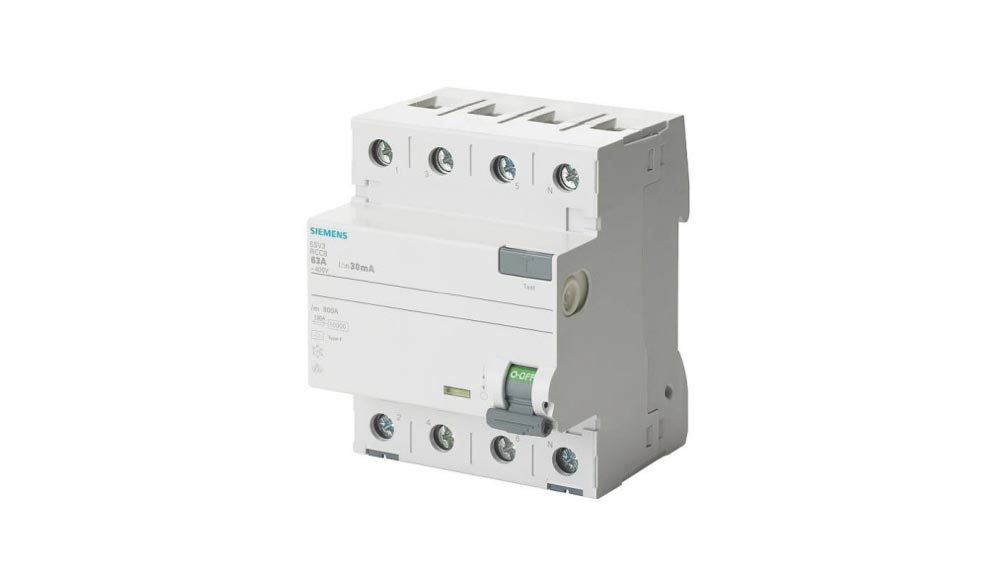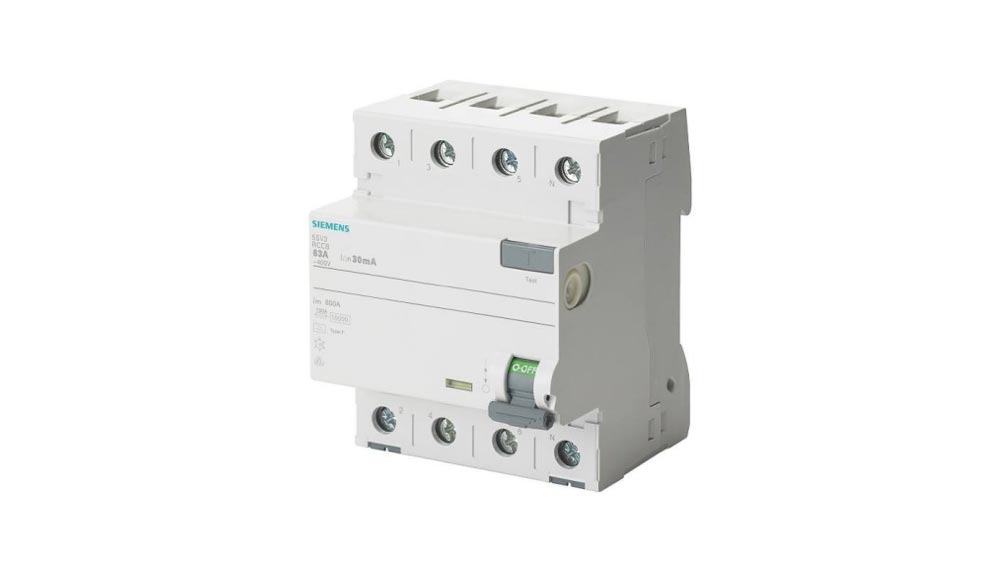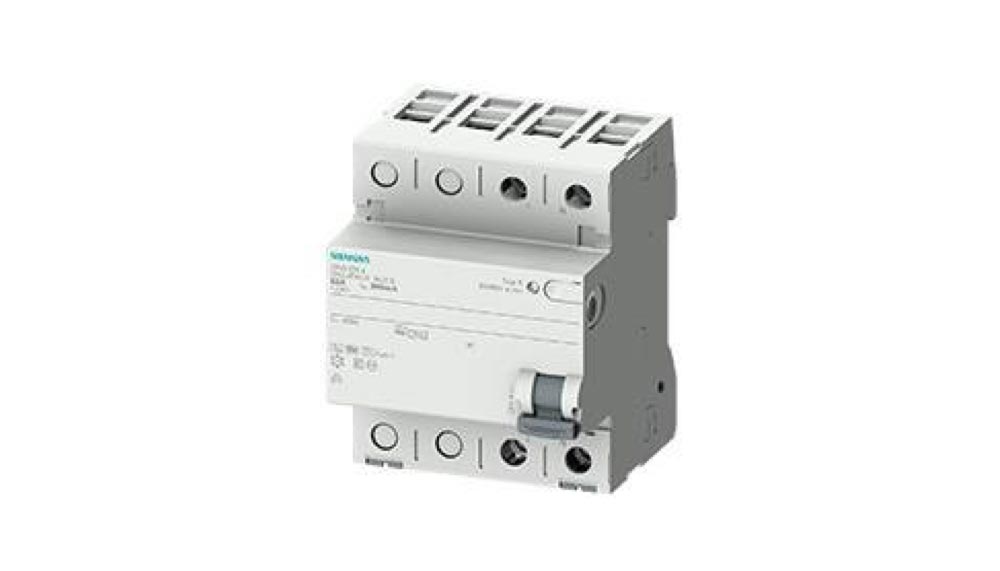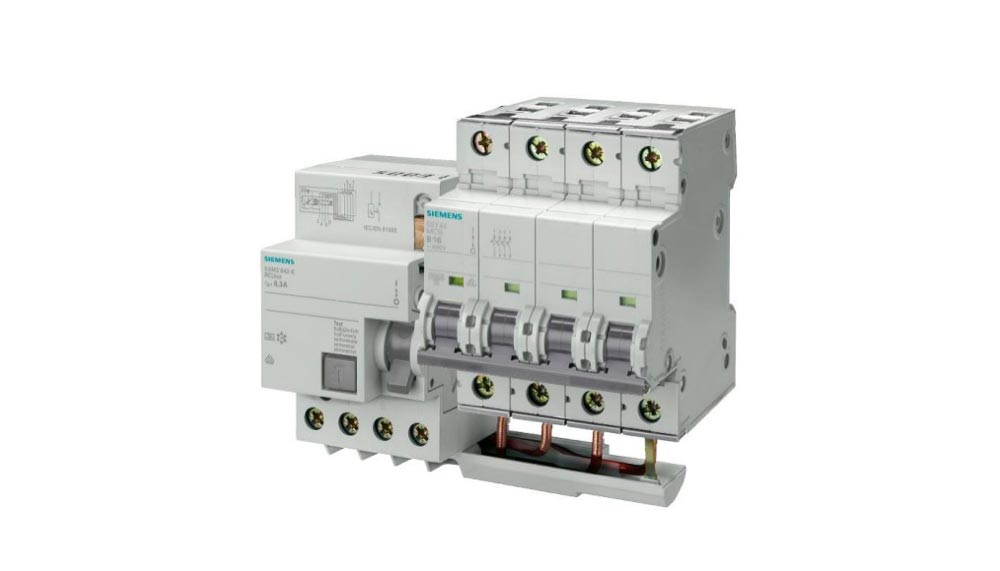Residual current protective devices
RCCBs, type A

- RCCBs, type A trip with both sinusoidal alternating currents (type AC) and pulsating DC residual currents. They are used mainly with single-phase consumers with electrical components in the supply unit, e.g. in residential and functional structures.
RCCBs, type F

- Many state-of-the-art devices, e.g. washing machines or heat pumps, use single-phase frequency converters. These can generate residual currents at the output side, caused by a mixture of frequencies with frequency components in the kilohertz range. RCCBs, type Fare best suited for this purpose, since they expand the range of functions offered by type A. They have an impulse withstand strength of > 3 kA and a current carrying capacity of up to 10 mA with smooth DC residual currents.
5SV3 RCCBs SIQUENCE, type B/B+

- Smooth DC residual currents may arise with the use of three-phase frequency converters, medical devices, UPS systems, and when charging electric vehicles. This is where 5SV3 RCCBS SIQUENCE, type B/B+ with integrated SIGRES function (see below, patented SIGRES version) come into play. They have an additional converter to detect DC residual currents and are suitable for use in a three-phase system upstream of input current circuits with rectifiers
RCBOs, type AC, type A and type F

- RCBOS (Residual current operated circuit breakers with overcurrent protection) combine residual current detection and overcurrent protection in a single device. The new 5SV1 RCBOs for the first time combine residual current and overload protection in one modular width (MW). This enables more protection devices to be installed in the distribution board and existing installations to be easily expanded with new protection functions in a spacesaving solution. The protection devices can also be connected in a 5SM6 AFD unit – thus offering personal, line and preventive fire protection.
RC units for use with miniature circuit breakers

- RC units can be fitted to miniature circuit breakers (MCBs) as per DIN EN 61009-1 (VDE 0664-20). Used in combination with a MCB, they provide the same functionality as an RCBO. The benefits are a high level of flexibility in use and elevated protection functionalities.




